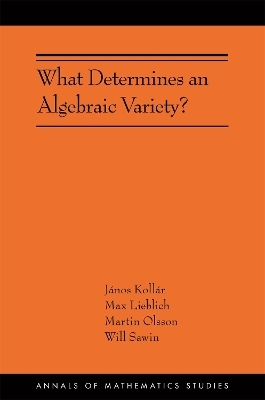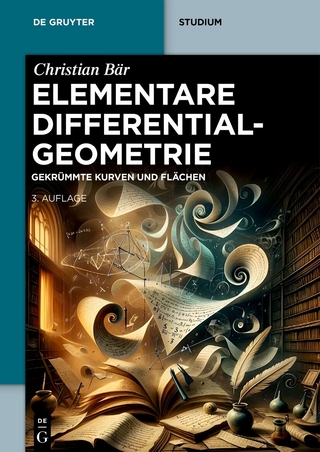
What Determines an Algebraic Variety?
Seiten
2023
Princeton University Press (Verlag)
978-0-691-24680-2 (ISBN)
Princeton University Press (Verlag)
978-0-691-24680-2 (ISBN)
A pioneering new nonlinear approach to a fundamental question in algebraic geometry
One of the crowning achievements of nineteenth-century mathematics was the proof that the geometry of lines in space uniquely determines the Cartesian coordinates, up to a linear ambiguity. What Determines an Algebraic Variety? develops a nonlinear version of this theory, offering the first nonlinear generalization of the seminal work of Veblen and Young in a century. While the book uses cutting-edge techniques, the statements of its theorems would have been understandable a century ago; despite this, the results are totally unexpected. Putting geometry first in algebraic geometry, the book provides a new perspective on a classical theorem of fundamental importance to a wide range of fields in mathematics.
Starting with basic observations, the book shows how to read off various properties of a variety from its geometry. The results get stronger as the dimension increases. The main result then says that a normal projective variety of dimension at least 4 over a field of characteristic 0 is completely determined by its Zariski topological space. There are many open questions in dimensions 2 and 3, and in positive characteristic.
One of the crowning achievements of nineteenth-century mathematics was the proof that the geometry of lines in space uniquely determines the Cartesian coordinates, up to a linear ambiguity. What Determines an Algebraic Variety? develops a nonlinear version of this theory, offering the first nonlinear generalization of the seminal work of Veblen and Young in a century. While the book uses cutting-edge techniques, the statements of its theorems would have been understandable a century ago; despite this, the results are totally unexpected. Putting geometry first in algebraic geometry, the book provides a new perspective on a classical theorem of fundamental importance to a wide range of fields in mathematics.
Starting with basic observations, the book shows how to read off various properties of a variety from its geometry. The results get stronger as the dimension increases. The main result then says that a normal projective variety of dimension at least 4 over a field of characteristic 0 is completely determined by its Zariski topological space. There are many open questions in dimensions 2 and 3, and in positive characteristic.
János Kollár is professor of mathematics at Princeton University and the author of eight books on algebraic geometry, including Lectures on Resolution of Singularities (Princeton). Max Lieblich is the Craig McKibben and Sarah Merner Endowed Professor of Mathematics at the University of Washington, Seattle. Martin Olsson is professor of mathematics at the University of California, Berkeley. Will Sawin is assistant professor of mathematics at Columbia University.
| Erscheinungsdatum | 20.07.2023 |
|---|---|
| Reihe/Serie | Annals of Mathematics Studies |
| Zusatzinfo | 4 b/w illus. |
| Verlagsort | New Jersey |
| Sprache | englisch |
| Maße | 156 x 235 mm |
| Themenwelt | Mathematik / Informatik ► Mathematik ► Geometrie / Topologie |
| ISBN-10 | 0-691-24680-7 / 0691246807 |
| ISBN-13 | 978-0-691-24680-2 / 9780691246802 |
| Zustand | Neuware |
| Haben Sie eine Frage zum Produkt? |
Mehr entdecken
aus dem Bereich
aus dem Bereich
Gekrümmte Kurven und Flächen
Buch | Softcover (2024)
De Gruyter (Verlag)
54,95 €
Nielsen Methods, Covering Spaces, and Hyperbolic Groups
Buch | Softcover (2024)
De Gruyter (Verlag)
109,95 €


